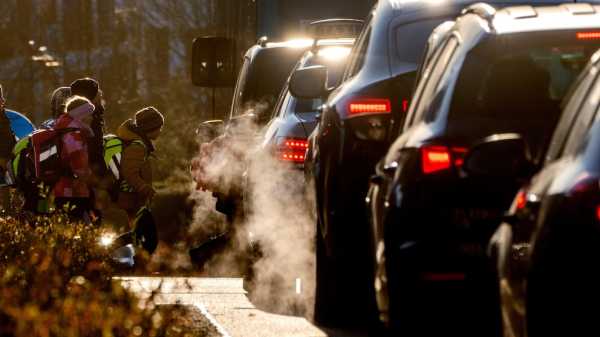
BRUSSELS — European Union member countries have watered down a proposal by the bloc's executive arm aimed at lowering vehicle emissions.
The European Commission had proposed last year updated pollution standards for new combustion engine vehicles that are expected to remain on European roads well after the 27-nation bloc bans their sale in 2035, with the aim of lowering emissions from tailpipes, brakes and tires.
The Commission hoped that new guidelines would help lower nitrogen oxide emissions from cars and vans by 35% compared to existing exhaust emission regulations for pollutants other than carbon dioxide, and by 56% from buses and trucks.
But several member states and automakers pushed for a weaker legislation and agreed Monday on a diluted compromise put forward by the rotating presidency of the EU currently held by Spain.
Member states instead decided to keep existing emissions limits and test conditions for cars and vans, and to lower them only for buses and heavy commercial vehicles. They also agreed to reduce brake particle emissions limits and tire abrasion rate emissions.
The standards are separate from but intended to complement the EU’s climate change rules for CO2.
“The Spanish presidency has been sensitive to the different demands and requests of the member states and we believe that, with this proposal, we achieved broad support, a balance in the investment costs of the manufacturing brands and we improve the environmental benefits derived from the regulation,” said Héctor Gómez Hernández, the acting Spanish minister for industry, trade and tourism.
The position adopted by member countries will be negotiated with the European Parliament once lawmakers have also defined their stance.
EU lawmakers and member states last year reached a deal to ban the sale of new gasoline and diesel cars and vans by 2035. The deal was part of the bloc’s “Fit for 55” package, which the European Commission set up to achieve the goal of cutting greenhouse gas emissions by 55% over this decade.
Under the deal, carmakers will be required to reduce the emissions of new cars sold by 55% in 2030, compared to 2021, before reaching a 100% cut five years later.
The Commission thought that introducing new pollution norms for the last generation of combustion engines was crucial because vehicles that enter the market before the 2035 deadline will remain in service for years.
According to the EU, emissions from transportation are responsible for some 70,000 premature deaths each year in the bloc.
___
Follow AP’s coverage of the climate and environment at https://apnews.com/hub/climate-and-environment
Sourse: abcnews.go.com






